Altona North Streets - History
Leslie Binns
Gunner Leslie Binns
Australian Army – 1st Australian Field Artillery
Son of Percival (Percy) Kilmarnick Binns and Mary Ellen Binns (nee Goodship).
Born 18 November 1924 in Footscray
Enlisted 2 August 1943
Died 23 August 1943 in Sydney, Australia
For more details about William Mangan, please follow this link – https://alhs.com.au/wp-content/uploads/2024/11/Leslie-Binns.pdf
Edward Blackshaw held 350 acres of land at the west end of the road, in Altona north, that now bears his name. It was around the late 1850’s to mid-1890’s that the family kept pigs and other animals for slaughter on the property. Blackshaws Road or as it was original known Blackshaw’s Road, runs eastward from what was the Brooklyn bridge across to Williamstown and was to be the most direct route of travel from Geelong Road to Newport and then on to Williamstown. Whilst a major byway it was, like many other roads in the area at the time, in constant bad condition.
Edward Blackshaw Jnr was born in 1850 in Northamptonshire, to parents Edward Blackshaw and Sarah Kate Blackshaw nee Rowse. The family, Edward Snr, Sarah and Edward, arrived in Victoria around 1853 from England and they moved initially to the Sydenham district before moving to the Altona/Brooklyn area where they purchased a total of 350 acres of land on five lots. Edward’s brother John was born in 1858.
Edward Jnr married Clara Griffiths (1849 – 1927) on 23 October 1871 in Wesleyan Church, Punt Road Prahran and over the next 25 years they had 14 children, 7 sons and 7 daughters. Edward Snr passed away in 1864 (aged 44) and it appears that Edward Jnr and John Blackshaw took over the running of the farm and business, a licensed slaughterhouse. Their mother, Sarah, continued living with her two sons and their families until she passed away in 1889. Sarah and Edward Snr were interred within the Williamstown cemetery (Church of England G, Row 16, Grave 7).
In March of 1872 Edward appealed to the Werribee Shire council to improve the road, that at that time was known as Blackshaw’s Road, as the family found it difficult to navigate their wagon along the road to market. He was advised that they would attend to this provided that he put broader ‘tires’ on the front wheels of the wagon to spread the load more evenly and reduce damage to the road surface. He complied by placing 6-inch-wide metal bands as wheel tires.
It appears that around 1894 Edward, Clare and John were forced to sell up the remainder of the property and they then moved to Yarragon, in Gippsland and settled into rural life there and join into the local community. Edward took up a role as a member of the Board of Guardians of the local Church of England (St Marks).
Edward passed away on 10 October 1920 in Yarragon, at the age of 70. The local newspaper noted ‘one of Yarragon’s oldest residents, in the person of Mr E Blackshaw has passed on. He was very well known, and was a most sterling character. Though he never took a prominent part in public matters, he was very staunch in support of clean, straightforward dealing in all matters, whether public or private.’ Clare passed away on 14 February 1927 in Warragul, at the age of 77.
Research: Graeme Reilly (Altona Laverton Historical Society) 2018
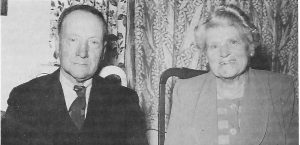 Blomberg Road was constructed circa 1965/6 and was named to recognise the Blomberg family who were pioneer settlers to the Altona area. Richard Augustus Blomberg and Ellen Louisa Blomeberg nee Fisher arrived in Altona with their family in 1916. He was a fitter and engineer at the Newport workshops but knew Altona from visits and summer holidays with the Williams family. The Blombergs ran a general store, woodyard, post office and newsagency, with a tea garden which was popular with summer visitors. In addition to running their businesses, the Blomberg family was keenly involved in local affairs and organisations such as Progress Association, Ratepayers’ Association, ANA Lodge, the Community Hospital and the Horticultural Society. Richard and Ellen lived with their family in Altona for many years before Ellen passed away in 1958 and Richard in 1960.
Blomberg Road was constructed circa 1965/6 and was named to recognise the Blomberg family who were pioneer settlers to the Altona area. Richard Augustus Blomberg and Ellen Louisa Blomeberg nee Fisher arrived in Altona with their family in 1916. He was a fitter and engineer at the Newport workshops but knew Altona from visits and summer holidays with the Williams family. The Blombergs ran a general store, woodyard, post office and newsagency, with a tea garden which was popular with summer visitors. In addition to running their businesses, the Blomberg family was keenly involved in local affairs and organisations such as Progress Association, Ratepayers’ Association, ANA Lodge, the Community Hospital and the Horticultural Society. Richard and Ellen lived with their family in Altona for many years before Ellen passed away in 1958 and Richard in 1960.
Research: Graeme Reilly (ALHS) 2020
Borrack Square, Altona North, was named in recognition of the Borrack family, who settled in Altona in 1921. It was also to recognise the contribution made, over more than 40 years, by the the Borrack family’s individual members (Charles, Mary and their daughter Mabel). Initially, Borrack Square was a thoroughfare running off McArthurs Road, but in 1960, the building of what is known today as Millers Inn saw the rise of a small number of retail shops. These shops were set out in an ‘American’ style drive in a shopping complex, later becoming the ‘Borrack Square’ of today.
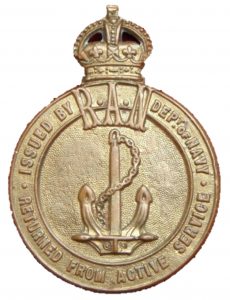 In April 1966, a new land sub-division was established at the north-west corner of Freeman and Blackshaws Roads in Altona North. A list of names was submitted for the new streets and courts, and the Altona Council chose the first eight to be named after service personnel who were killed in action during World War 2. They were also listed on the Memorial standing in front of the council buildings in Civic Parade. One of these streets was to be known as Carthy Street, named after Able Seaman George Thomas Carthy of the Royal Australian Navy.
In April 1966, a new land sub-division was established at the north-west corner of Freeman and Blackshaws Roads in Altona North. A list of names was submitted for the new streets and courts, and the Altona Council chose the first eight to be named after service personnel who were killed in action during World War 2. They were also listed on the Memorial standing in front of the council buildings in Civic Parade. One of these streets was to be known as Carthy Street, named after Able Seaman George Thomas Carthy of the Royal Australian Navy.
George Thomas Carthy was born 14 June 1920 in Fitzroy, the eldest of two children born to parents George Martin Carthy and Daisy Carthy (nee Sparks). At the time of George’s birth, the Carthy’s were living in Seves Street, Altona.
When World War 2 was declared in September 1939, George Thomas Carthy immediately enlisted with the Royal Australia Navy in Williamstown. George was nineteen years old. George completed his training at the naval base Cerberus before being assigned to the HMAS Westralia in February 1940. On 11 January 1941, she returned to Sydney after an absence of ten months. It was here that George found himself reassigned to the HMAS Sydney that had recently been refitted. Whilst sailing south along the Western Australian coast, on 17 November 1941, HMAS Sydney encountered a German ship MV Straat Malakka which was in fact the HSK Kormoran. A fierce battle ensued which caused fatal damage to both ships, HMAS Sydney attempted to limp back to Fremantle, but its damage was too great, and she sank with her full compliment of 645 souls. One of this was George Thomas Carthy.
For more information about George Thomas Carthy, please follow this link: https://alhs.com.au/wp-content/uploads/2023/08/George-Thomas-Carthy.pdf
Ronald James Cooper
In 1957, when Altona seceded from the Shire of Werribee and formed its own Shire and council, Ronald Cooper was among many other residents looking to be elected onto the first council. Ronald Cooper stood on the Labor ticket and was the sixth resident elected. Altogether, there were seven labor candidates elected successfully on 11 May 1957.
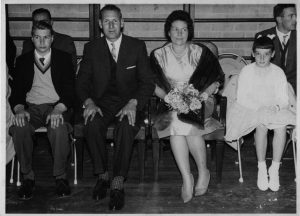 Cooper Ronald James Cooper was born on 1 February 1921, in Ballarat, to Edwin James Cooper and Elizabeth Gertrude Cooper (nee Ritchie). Ronald seems to have been the eldest of four children born to Edwin and Elizabeth. He spent his formative years in the Steiglitz area, west of Melbourne, where the family resided, and also spent time within the township of Meredith, where his father operated the family business.
Cooper Ronald James Cooper was born on 1 February 1921, in Ballarat, to Edwin James Cooper and Elizabeth Gertrude Cooper (nee Ritchie). Ronald seems to have been the eldest of four children born to Edwin and Elizabeth. He spent his formative years in the Steiglitz area, west of Melbourne, where the family resided, and also spent time within the township of Meredith, where his father operated the family business.
After completing his education, Ronald took up blacksmithing, which he continued practicing well into his forties. On 28 May 1941, he enlisted into Australian Army. During World War 2, he served with the Volunteer Defence Corps. The Volunteer Defence Corps was formed on 15 July 1940 and was an Australian version of the British Home Guard, run by the government and the Returned Services League. It was composed of volunteers. The Volunteer Defence Corps was a national organisation, led by distinguished members from those that served in the First World War who were deemed too old for frontline service. Ronald remained in service with the Volunteer Defence Corps until March 1943, when he was discharged from his service. It was just after this that he married Norma Olive Churchill and the couple moved to the suburb of Altona North, living in Prentice Street.
In early 1957, Ronald James Cooper placed his name on the ballot paper for election to the new Shire of Altona council, along with many others. He was successfully elected at the May elections and served as a councilor for 7 years and 3 months. At the 1964 election, he decided not to re-run for councilor. Shortly before his decision not to re-stand for council, Ronald had commenced a small ‘mixed’ business in the Altona North area, close to Studley Street, close to where he and his family were living. It was also around this time the Coopers moved into the street that had been named after him, Cooper Avenue.
In 1977, the Cooper family searched for warmer climates, leaving Altona behind and moving to the Gold Coast area of Queensland, where they settled initially in Mermaid Beach.
Norma Olive Cooper, Ronald’s wife, passed away on 30 April 1983, at Mt Warren Park, Queensland. She was cremated at Mt Thompson Crematorium. Norma was survived by Ronald and their two children, Geoff and Leonie. Some years later, Ronald remarried, his new bride was Joan Mabel Gibson, and they moved into the Caloundra area of Gold Coast. On 17 November 2008, Ronald James Cooper passed away and was cremated at the Caloundra Crematorium, Queensland. He was survived by his second wife, Joan, and his children from his first marriage.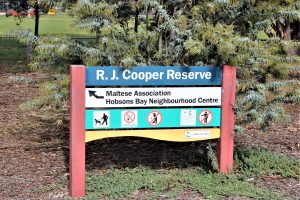
Research: Graeme Reilly (ALHS 2023)
Editing: Michelle Yu
Cresser Street is in the suburb of Altona North, running west to east from Millers Road to Mills Street, one block north of Mason Street. It was named to honour the contribution and service of Walter George Cresser, one of the nine inaugural councillors of the Shire of Altona.
For more information about Walter Cresser follow this link: https://alhs.com.au/local-history/people/walter-cresser/
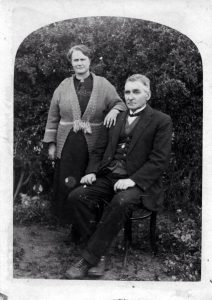 Duke Street Altona North is another of our streets that has been named to honour not only one of Altona’s pioneering families but a man who gave so much to our community. James Francis Duke was born in 1863 in Newham, Victoria to parents George and Anne Duke. James married Mary Margaret Bell in Fitzroy on 9 February 1888 and they had 12 children, many of whom had reached maturity by the time the family moved to Altona in 1917.
Duke Street Altona North is another of our streets that has been named to honour not only one of Altona’s pioneering families but a man who gave so much to our community. James Francis Duke was born in 1863 in Newham, Victoria to parents George and Anne Duke. James married Mary Margaret Bell in Fitzroy on 9 February 1888 and they had 12 children, many of whom had reached maturity by the time the family moved to Altona in 1917.
When they first settled here, they lived in a tent whilst their house was being built in Bayview Street, however it wasn’t long after that the Army acquired their home and purchased them another in Mount Street.
You might have thought that with having 12 children and building a house then moving James would have little time for anything else but he was a man for his community and he gave a great deal at a time Altona was still an emerging district. When James Duke first came to the district there were no churches, so he helped build one. Money was scarce so the Catholic Church was built from the funds he raised by organising functions.
He was also a Commissioner for Affidavits and played an active part in the Progress Association. He was a founding member of the Altona Life Saving Club, Altona Football Club, and Altona Cricket Club to name some of his achievements. James’ son George was the first soldier from Altona to return home after WWI and his battalion colours were purple and gold. These became the colours adopted by the Altona Football Club and remain so to this day.
James was part of the first committee organising the establishment of a new hospital in the local area, bringing the project to fruition when the doors in Pier Street opened in October 1932. He was described as a tall, stout and energetic man, quietly spoken and a true gentleman. There is a story that he let a man, his wife and large family stay in a house he owned rent free, and he lent money to members of the football club to buy their jumpers.
James Francis Duke died on 2 August 1941 in Altona, when he was 78 years old, and his wife Mary died in 5 July 1944 in Brunswick, at the age of 77.
Research: Graeme Reilly (Altona Laverton Historical Society) 2018
Cyril Gadsden
Private Cyril Gadsden (S/N VX90335)
Australian Army – 2/31 Australian Infantry Battalion
Son of William Louis Gadsden and Florence Elizabeth Gadsden (nee Harding)
Born 21 April 1906 in Prahran
Enlisted 23 September 1942
Died 16 November 1944 in Albury, NSW
For more details about Cyril Gadsden, please follow this link – https://alhs.com.au/wp-content/uploads/2023/09/Cyril-Gadsden-Story.pdf
Ginifer Avenue in Altona North was named to acknowledge the work and contribution made by Councillor and MLA John Ginifer.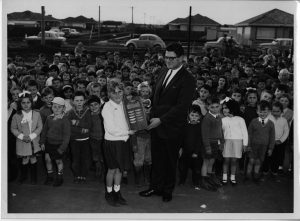
John Joseph ‘Jack’ Ginifer was born in Warracknabeal, 31 August 1927 to Joseph Ginifer, a Singer sewing machine salesman from England, and Agnes Harper. He was educated at schools in Benalla and then undertook teacher training at Melbourne Teachers College and then completed Bachelor of Arts at the University of Melbourne.
He worked as a schoolteacher for more than twenty years from 1945 to 1966, including at Jamieson St Primary School in Warrnambool, Shepparton, Tallarook, St Albans, Yearinga and Stewarton. In 1951 he married Audrey Christina Heaney of Stewarton, also a fellow teacher, at the Benalla Holy Trinity Church.
John Ginifer was active in local government politics, serving as a councillor in the Williamstown City Council 1955–1957 and then the Shire of Altona 1960–1969 including the Shire President in 1964/65. He was also on the state executive of the Labor Party from 1959 to 1966. John Ginifer introduced the concept of a Junior Council, open to local school students and was also the acting Shire President when the Shire met the requirements to become classified as a City.
In 1966, Ginifer was elected at a by-election to the Victorian Legislative Assembly as a Labor member for the seat of Grant, will undertaking this role he also remained a councillor of the Altona Shire. Electoral redistributions saw his seat renamed Deer Park in 1967 and Keilor in 1976. On 8 April 1982, Ginifer was made a minister in John Cains first cabinet as Minister for Consumer Affairs and Minister for Immigration and Ethnic Affairs, but he resigned from those posts, and from the parliament, a month later on 10 May, after being diagnosed with terminal cancer. He died two months later, 9 July, aged 54.
Ginifer railway station in St Albans, J. J. Ginifer Reserve in Altona North, Jack Ginifer Reserve in Gladstone Park, and Ginifer Court, a cul-de-sac in St Albans, were also named in his recognition.
Gordon Luck Avenue was named after Altona resident, Gordon Luck. Not a lot is known about him, so if you can help us with more information, we would be very grateful for your input.
We do know that Gordon was born William Gordon Dudley Luck on 29 September 1917 in Violet Town, Victoria, to parents Henry Charles Luck and Emily Jane Luck (nee McMullen). He was the third of three sons, and he also had one much older half sister, Evelyn Mabel Thomas. She is more well known in the Altona community as Pet McAlpine when she lived on Millers Road in the 1960s.
With the outbreak of World War 2, Gordon enlisted in the Australian Army on 17 August 1940 at Moonee Ponds. He was assigned to the 2 Medium Regiment, an artillery regiment which was raised in 1940, and undertook garrison duties within Australia.
In 1941, Gordon married Mavis Eileen Naughton, and they established their first home in Blyth Street, Altona. A few years later, they moved to Queen Street before finally settling down in their own home at 50 Seves Street by 1954. This was where they raised two sons, David and Shane; sadly, an older son, Garry, didn’t survive infancy.
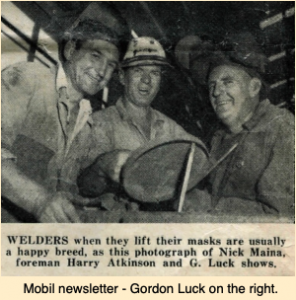
Gordon Luck working at Mobil
During this time, Gordon was firstly employed as a Magazine assistant, at the ammunition plant in Maribyrnong, and then as a gold stamper. Next, he began working as a welder for Mobil Oil Refinery in Altona, where he was pictured in their newsletter, published about 1954.
Gordon passed away on 24 March 1973 at the young age of 57 and was interred in Fawkner Memorial Park. Altona councillors sent a letter of condolence to his family, expressing their appreciation for all the work Gordon had done for the Altona Youth Club, opened in 1964, and acknowledging his involvement in the Altona Ratepayers Association.
In 1967, through his participation in the Ratepayers association, Gordon authorised the publication of an advertisement in the Altona Star, urging locals to vote for three independent candidates standing for Altona council: Pat Burns, Doug Grant and Pat Lynch.
His son Shane became a skilful carpenter who was later employed by Hobsons Bay City Council in their building maintenance department.
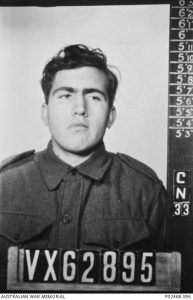 Named in 1966 after Private William Lawrence Harris (VX62895)
Named in 1966 after Private William Lawrence Harris (VX62895)- Born 22 July 1921 in Wagga Wagga, NSW
- Son of Harry Lawrence Harris and Lillian Margaret Harris (nee Puckett)
- Enlisted 2 September 1941
- Served with 2/10 Ordnance Workshop Company in Singapore
- Died 26 February 1945 in Ranau, Borneo as a POW.
If you would like to learn more about Private William Lawrence Harris please follow this link https://alhs.com.au/wp-content/uploads/2023/09/WL-Harris.pdf
These two streets, in Altona North, were accordingly named to recognise an early pioneering family of both Melbourne and Altona – the Ross family and in particular David and Johanna Ross.
David Ross was an immigrant from Rosshire in the far north of Scotland who landed in Williamstown in 1840 and soon afterwards married Johanna Madigan, recently arrived from Ireland. Together these two pioneers developed a dairying farm north of the Geelong railway line in the vicinity of Altona Lakes Public Golf Course. The farm was named Shandwick while the homestead they established was called Hatherly or Hatherley. This building was situated just west of the swamp that still exists and fronted Ross Road. Nothing remains of the building now. David Ross purchased another 158 acres south of Blackshaws Road and west of Blenheim Road, three four-acre blocks in the Altona East area on 17/4/1855 and later on he bought four five-acre blocks in the area west of Chambers Road near Kororoit Creek making his total of land purchased at 300 acres.
Ross Road, running parallel with Geelong railway line for some distance, existed before 1886 and would have been named after the Ross family. A nearby railway station built in about 1890 was named Hatherley Station, which now no longer exists.
The street Hatherley Grove was also named after the Ross family homestead. We have in our archives at the Altona Homestead a handwritten letter received in September 1964 from Edith Master, the great granddaughter of David Ross, in which Edith recalls her mother telling her that Hatherley Grove was named after the old homestead and railway station.
The variations of Hatherly and Hatherley are not unusual for names that can have more than one form of acceptable spelling.
BIBLIOGRAPHY
- Altona A Long View by Susan Priestley, pages 56, 64 and 92.
- Letter from Edith Master dated 30 Sep 1964.
- Altona Star, 18 November 1970, page 2.
Research: Ann Cassar (ALHS May 2019)
Three months after the council elections in August 1960, Councillor Alfred William Langshaw resigned to take up a position as the Altona Shire Building Inspector. His vacancy was contested by three candidates, one of which was William John Irwin, a North Altona resident and Australian Labour Party member. William had been a key player in the drive for Altona to secede from the Werribee shire, having held the positions of treasurer and president during his time on the Altona Municipal Campaign Committee. In fact, having only been in Australia for a short period of time, William had well and truly entrenched himself into the political arena and local community affairs of his newly adopted hometown. So, what is the William Irwin story?
For more details about William John Irwin follow this link: https://alhs.com.au/wp-content/uploads/2024/06/William-John-Irwin.pdf
Douglas John Knapp
Stoker 2nd Class Douglas John Knapp (S/N W1919)
Royal Australian Navy – HMAS Sydney
Son of Frederick Marlow Knapp & Rose Louisa Knapp (nee Daley)
Born: 8 July 1923 North Kensington, England
Enlisted: 6 January 1941
Died: 20 November 1941
For more details about Douglas John Knapp please follow this link: https://alhs.com.au/wp-content/uploads/2023/10/Douglas-John-Knapp.pdf
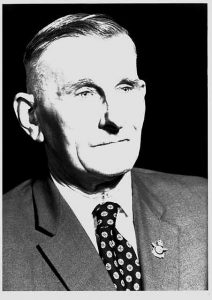 Langshaw Street, Altona North, runs between Paringa and Duosa Roads, just south of the West Gate Freeway. This unassuming street was named to acknowledge the contribution to our town by Alfred William Langshaw. Alfred was the fourth of the nine councillors elected to the first council of the Altona Shire in May 1957.
Langshaw Street, Altona North, runs between Paringa and Duosa Roads, just south of the West Gate Freeway. This unassuming street was named to acknowledge the contribution to our town by Alfred William Langshaw. Alfred was the fourth of the nine councillors elected to the first council of the Altona Shire in May 1957.
For more information about Alfred William Langshaw go to https://alhs.com.au/local-history/people/alfred-william-langshaw/
William Mangan
Private William Mangan (S/N VX16654)
Australian Army – 2/6 Australian Infantry Battalion
Son of Daniel Mangan and Kathleen (Kate) Mangan (nee Mahon)
Born 14 July 1915 in Coburg
Enlisted 21 March 1940
Died 26 April 1941 in Greece
For more details about William Mangan, please follow this link – https://alhs.com.au/wp-content/uploads/2023/08/Eric-Robert-Mangan.pdf
There are a number of streets within Altona North, near WLJ Crofts Reserve that are named to honour the memory of locals who served and died within WWII. Meddings Court is one of these streets and is named to recognize Able Seaman Ronald Meddings.
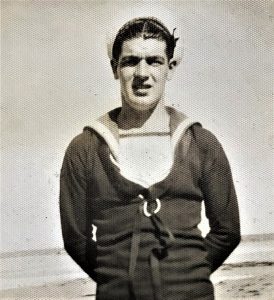
Able Seaman Ronald Meddings
Ronald Meddings joined the Royal Australian Navy in July 1942 (WWII) and following basic training at Cerberus he was assigned to HMAS Australia in November 1943. HMAS Australia with Ronald aboard saw action in the Pacific against the Japanese navy. It was within one of these battles, in early January 1945, that unfortunately Ronald lost his life. At the time of his enlistment, Ronald was living with his wife and young child at 75 Queen Street, Altona.
HMAS Australia was a Kent-subclass ship that entered the Royal Australian Navy service in 1928. She operated within local and South-West Pacific waters up until the beginning of WWII. In early 1942 the Australia was assigned as a flagship of the ANZAC Squadron which operated in support of the United States naval operations throughout South-East Asia from 1942 to 1945. It was HMAS Australia had returned to Milne Bay in Papua New Guinea that AB Ronald Meddings joined the crew.
On 15 December 1943, Australia and Task Force 74 participated in the landings at Arawe, escorting the landing force, then performing pre-landing bombardment. The Australia also led the landing and escort force for the landing at Cape Gloucester, departing from Milne Bay on the evening of 25 December. On 26 December, Australia commenced a two-and-a-half-hour shelling of targets near the Gloucester airstrip prior to the landing, after which she sailed to Buna, where she remained for the rest of the year.
During 1944 the Australia remained operating around Papua New Guinea and was involved in the Battle of Wakde and the bombardment of Biak Island. She also saw action at Noemfoor Island and Morotai. Towards the end of the year, the Australia together with HMAS Warramunga and US ships Honolulu and Richard P Leary proceeded to Espiritu Santo Island in Vanuatu for much needed repairs.
At the start of 1945 the Australia and ships under her command joined the task group assigned to the invasion of Lingayen Gulf. HMAS Australia’s five-day action began when she was south west of Manila heading for the landing beaches of Lingayen Gulf. At was here that the Australia and other ships came under attack from Japanese aircraft. She was hit portside midship on 5 January which resulted in the loss of 25 crew with a further 30 wounded. The following day, having reached the gulf and commenced pre-landing bombardment, the Australia was struck again this time killing 14 crew and wounding 26. It was here that a young father, husband and son, Ronald Meddings, died serving his country in a time of need.
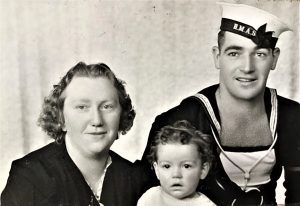
Ronald Meddings and Ruby Meddings
Typical of the sterling work done by her personnel was the coolness of two young gunners who at one stage of the action held their fire until two bombers were within 200 yards, then they fired. One plane exploded in mid-air and the other struck the water in flames.
A memorial is located at the Plymouth Unitary Authority, Devon, England listing all of those who lost their lives during that battle. Meddings Court in Altona North was named for Ronald’s association with Altona and his ultimate sacrifice during WWII.
Millers Road, that stretches from Brooklyn, in the north, to Seaholme, in the south, was named after one of our early pioneers Thomas Miller. Thomas arrived from Durham, England to find his fortune in the Victorian Goldfields, but later became a carrier and transported goods and suppliers to the miners. In about 1867 he purchased a farm at what is the northern end of Millers Road at the junction with Geelong Road, and grew hay for the Melbourne market. In 1876, Wyndham Council began the construction of the main road that fell within its jurisdiction.
Thomas Miller built and operated the ‘Half Moon Inn’ at the junction which was used by many migrants who had arrived via the Williamstown ports and were heading for the goldfields. The picture below shows the original building with Mrs Miller, holding the young child, standing under the verandah. The verandah was later removed when the building was converted and operated as a post office for about 42 years.
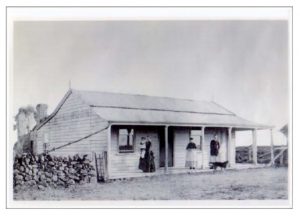
Family member, Stan Miller, constructed a brick house on the site for his family, but the house later made way for a Milk Bar and a Caravan park which remained until the land was sold in 2010 and the caravan park ceased operation.
The photograpgh below shows the Miller farm at the intersections of Francis Street (in the foreground), Geelong Road (heading north-west from the buildings) and Millers Road (heading left from the buildings).
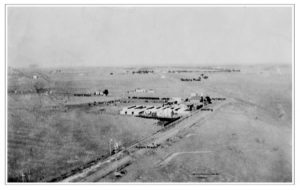
Research: Ann Cassar
Photographs: Miller family and ALHS archives
In early 1966, the names of eight local servicemen who lost their lives during the Second World War were honoured with street names in a newly established estate within Altona North. One of these was Murdoch Court, which runs north from Harris Street and ends just before the West Gate Freeway. It was named so to acknowledge the ultimate sacrifice given by Altona resident, Private David Murdoch.
For more information about David Murdoch, please follow this link – https://alhs.com.au/wp-content/uploads/2024/09/David-Murdoch-edited.pdf
Leonard Paproth
Corporal Leonard Charles Paproth
RAAF 1 Recruit Depot Shepparton
Son of Herman John Paproth and Annie Elizabeth Paproth (nee McCann)
Born 3 May 1922
Enlisted 15 April 1943
Died 22 September 1943
For more information about Corporal Leonard Paproth please follow this link: https://alhs.com.au/wp-content/uploads/2023/12/Leonard-Charles-Paproth.pdf
Stuber Road was constructed just off Grieve Parade, within the industrial area, around 1966/67 and was named to recognise another of Altona’s pioneer families – Albert August Stuber, his first wife Eva Stuber nee Seeger (1870-1919) and his second wife Annie Amelia Stuber nee Price (1873-1959). Albert was born in Germany and came to Australia in 1901 and to Altona in 1915 at the commencement of WWI, at a time which would have made it very difficult to settle into any Australian town but fit into Altona and prosper he and his family did. Like his fellow pioneer residents, Albert Stuber contributed to the growth and progress of Altona and its residents. Together with his son, Albert jnr, the Stuber family assisted new residents with the construction of their homes as they were both carpenters as well as undertaking a number of major repair works to civil structure. Albert August Ferdinand Stuber passed away in August 1946 and is buried within the Fawkner Memorial Park (Garden of Remembrance 1, Section 8, Niche OUU). Annie Amela Stuber passed away in 1959 and is buried alongside her husband.
Research: Graeme Reilly (ALHS) 2020
